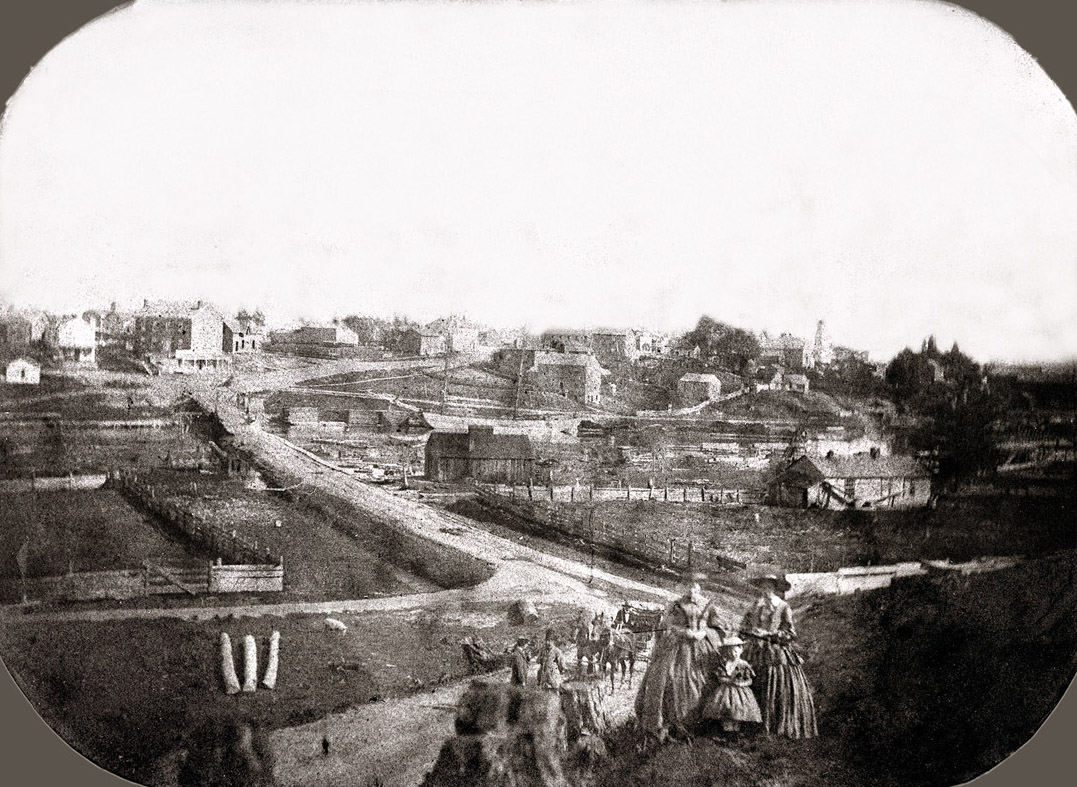Port Burwell

Bridge Street, looking east towards Otter Creek in Port Burwell.
Port Burwell and Port Stanley received a number of free Black and formerly enslaved immigrants in the years before 1865. Few left a record of any kind so it is difficult to gauge the number that actually arrived on these shores.
Port Burwell was the landing place for many formerly enslaved persons who crossed Lake Erie looking for freedom in Canada. Here, they travelled inland on what is known today as Plank Road (County Road 19), a name it acquired in the 1850s when it was literally paved with wooden planks. In 1849, legislation was passed giving private companies the power to lease public roads and collect tolls. In exchange the roads were to be maintained to certain standards. The best surface obtainable then was plank. Bayham Township was in the midst of a timber boom in the 1850s. Millions of feet of sawn lumber were shipped out every year and it would have been relatively easy to surface a road with planks all the way to Ingersoll.
From the port, fugitives took a stage coach as far inland as Ingersoll. The stage was often driven by Harvey C. Jackson, a well-connected abolitionist. Jackson served as a guide for John Brown when he visited this area in the 1850s, recruiting for his raid on the arsenal at Harper’s Ferry. Most of the newly arrived fugitives travelled north on the stage where many found jobs cutting wood for the building of the Great Western Railway. As many as 2500 African-Americans were at work on the railways in this part of Canada in 1851. The 1861 census recorded 149 Blacks as resident in Ingersoll, the most common stopping point, but it is likely lower than the actual number.
Port Burwell and Port Stanley received a number of free Black and formerly enslaved immigrants in the years before 1865. Few left a record of any kind so it is difficult to gauge the number that actually arrived on these shores.
Port Burwell was the landing place for many formerly enslaved persons who crossed Lake Erie looking for freedom in Canada. Here, they travelled inland on what is known today as Plank Road (County Road 19), a name it acquired in the 1850s when it was literally paved with wooden planks. In 1849, legislation was passed giving private companies the power to lease public roads and collect tolls. In exchange the roads were to be maintained to certain standards. The best surface obtainable then was plank. Bayham Township was in the midst of a timber boom in the 1850s. Millions of feet of sawn lumber were shipped out every year and it would have been relatively easy to surface a road with planks all the way to Ingersoll.
From the port, fugitives took a stage coach as far inland as Ingersoll. The stage was often driven by Harvey C. Jackson, a well-connected abolitionist. Jackson served as a guide for John Brown when he visited this area in the 1850s, recruiting for his raid on the arsenal at Harper’s Ferry. Most of the newly arrived fugitives travelled north on the stage where many found jobs cutting wood for the building of the Great Western Railway. As many as 2500 African-Americans were at work on the railways in this part of Canada in 1851. The 1861 census recorded 149 Blacks as resident in Ingersoll, the most common stopping point, but it is likely lower than the actual number.
